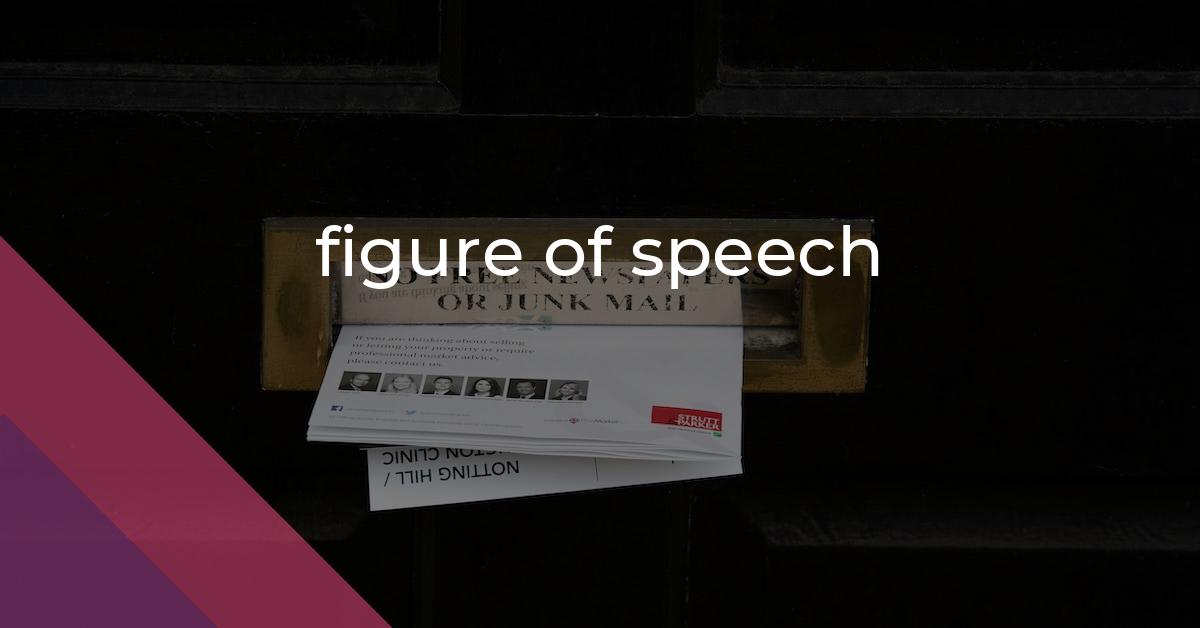figure of speech: Idiom Meaning and Origin
What does ‘figure of speech’ mean?
A figure of speech is a word or phrase used non-literally to create a specific effect. It adds depth and imagery to language, allowing speakers to express ideas in a more creative and nuanced way.

Idiom Explorer
The idiom "pretty pictures" refers to visually appealing and attractive images or photographs. It is often used to describe something that looks nice or pleasing to the eye but lacks substance or depth.
The idiom "in other words" is used to introduce a rephrasing or clarification of something that has just been said or written, providing an alternative wording or explanation.
The idiom "go without saying" means that something is so obvious or well-known that it doesn't need to be stated explicitly.
The idiom "funny stuff" refers to something that is amusing, quirky, or strange. It is often used to describe situations, actions, or remarks that are humorous or out of the ordinary.
The idiom "fill in the blank" means to provide missing information or complete an unfinished statement or question. It is often used when the speaker intentionally leaves out a word or phrase, requiring the listener to supply the missing part.
The idiom "do the talking" means to express oneself or convey a message primarily through actions or behavior instead of words.
The idiom "dirty word" refers to a word or phrase that is offensive, vulgar, or taboo in nature. It is generally used to describe language that is considered inappropriate or socially unacceptable in certain contexts.
The idiom "cut a figure" means to create an impressive or striking appearance, often in a social or public setting.
The idiom "creature feature" refers to a movie or TV show that prominently features fictional creatures, such as monsters or aliens. It is often used to describe a genre of entertainment that focuses on thrilling or scary stories involving these creatures.
An idiom used to describe something ordinary, typical, or unremarkable.
The Enigmatic Expression
Idioms are a fascinating aspect of language. They use words in a non-literal manner to create a rhetorical or stylistic effect. One such idiom is "figure of speech." Let's explore the origins and usage of this idiom, delving into its nuances and shedding light on its significance in the English language.
The term "figure of speech" comes from the Latin word "figura," meaning "shape" or "form." This demonstrates how a "figure of speech" shapes or forms the language in a way that deviates from literal meaning. It emphasizes that figures of speech come to life in spoken expression.
When examining the etymology of this idiom, the term "figure" comes from the Latin word "figura," meaning "shape" or "form." This demonstrates how a "figure of speech" shapes or forms the language in a non-literal manner.
The concept of using figurative language dates back centuries. Ancient Greek and Roman rhetoricians often employed figures of speech to enhance their oratory skills. The phrase "figure of speech" has been in use in English since the 16th century.
Figures of speech serve several purposes, including adding depth and vividness to one's communication, fostering creativity, and creating memorable expressions. They can be found in poetry, prose, and everyday conversations. These linguistic devices allow speakers to convey abstract concepts, evoke emotions, or capture complex ideas concisely.
There is a wide array of figures of speech, including metaphors, similes, hyperbole, and personification. Each figure of speech has its own unique characteristics and usage, contributing to the colorful tapestry of language.
Metaphors are figures of speech that make a comparison between two unrelated things, while similes use "like" or "as" to make a comparison. These figures of speech add depth and vividness to language, allowing us to create "pretty pictures" in the minds of our readers.
Hyperbole, on the other hand, is an exaggerated statement that is not meant to be taken literally. It is used to emphasize a point or create a dramatic effect. By using hyperbole, we can highlight the intensity of a situation or create a "bad word" that grabs our reader's attention.
Personification gives human qualities or characteristics to non-human entities. It allows us to bring inanimate objects or abstract concepts to life, making them relatable and easier for readers to understand. Through personification, we can make these entities "cut a figure" in our writing.
While metaphors, similes, hyperbole, and personification are just a few examples of figures of speech, each figure can bring a unique flavor to our writing. They allow us to express ourselves in a more imaginative and engaging manner.
Throughout history, figures of speech have been used as powerful tools of persuasion and expression. Renowned writers and speakers have utilized these idioms, breathing life into their words and leaving a lasting impact on their audiences.
So next time you come across a figure of speech, remember the history, creativity, and meaning it holds. Explore the depths and intricacies of these expressions, and use them to enrich your own writing and communication.
Example usage
Examples of how the idiom "figure of speech" can be used in a sentence:
- Her statement was not meant to be taken literally; it was just a figure of speech.
- When he said he was "on top of the world," it was just a figure of speech to express how happy he was.
- The poet used various figures of speech, such as similes and metaphors, to enhance the imagery in the poem.
More "Rhetoric" idioms
We missed the mark - nothing found.



